
La Mezquita-Catedral de Córdoba is simply the most impressive building I’ve ever entered. It is commonly known as La Mezquita, the mosque. The official website details the history along with an interactive graphic depicting the evolution and construction of the mosque over several centuries. It is an imposing structure, with walls rising several stories high and covering an area easily as large as a few city blocks (the exterior walls measure about 590 by 425 feet, or 197 by 141 yards, which is 24,000 square meters).
Built in the 8th century during the rule of Abd al-Rahman I, subsequent Arab rulers expanded the mosque several times and added a minaret. La Mezquita is known for its double-tiered arch design in the prayer hall. The repeating red and white pattern across the mosque is fascinating.
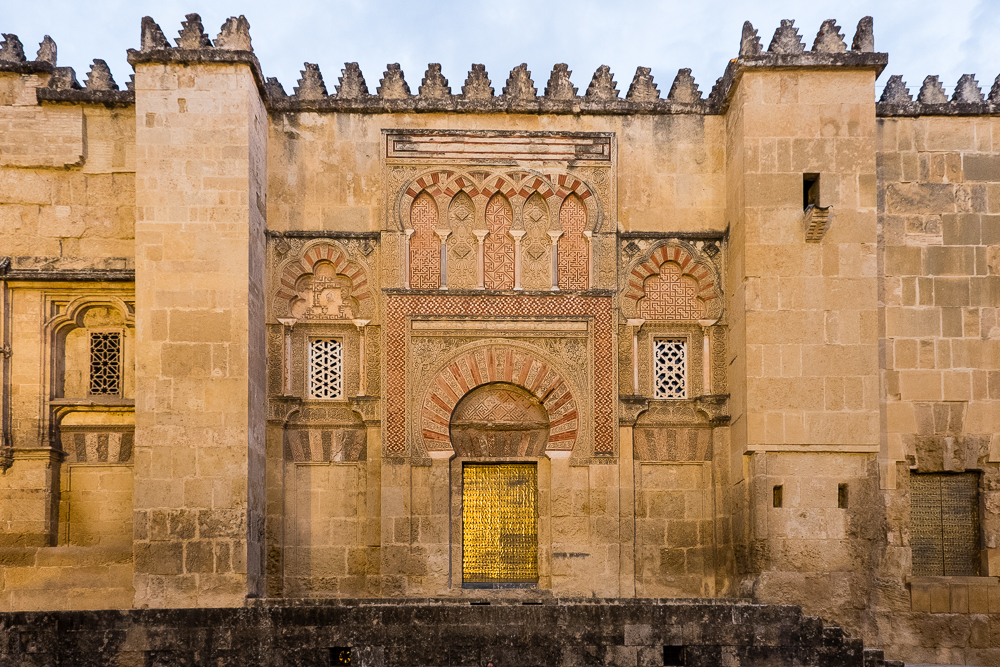
In the 13th century the mosque was converted for use as a cathedral. Numerous small chapels were constructed on the interior perimeter walls. The 16th century saw the most significant change as a new nave and transept were built in the middle of the mosque. Not next to the mosque, on one side, or in place of it, but literally in the middle. No walls separate the areas of the mosque and cathedral (except around the choir). The cathedral is just there.
One minute you’re walking in an Arabic mosque, then you turn the corner and walk through a towering Gothic cathedral, and out into the mosque on the other side.
In Seville, the Christians converted a mosque into a massive Gothic cathedral by removing almost all traces of the mosque, except for La Giralda. In Córdoba, the Christians kept the mosque largely intact and simply inserted a Gothic cathedral. La Mezquita’s minaret, damaged in an earthquake, was transformed into a typical bell tower.
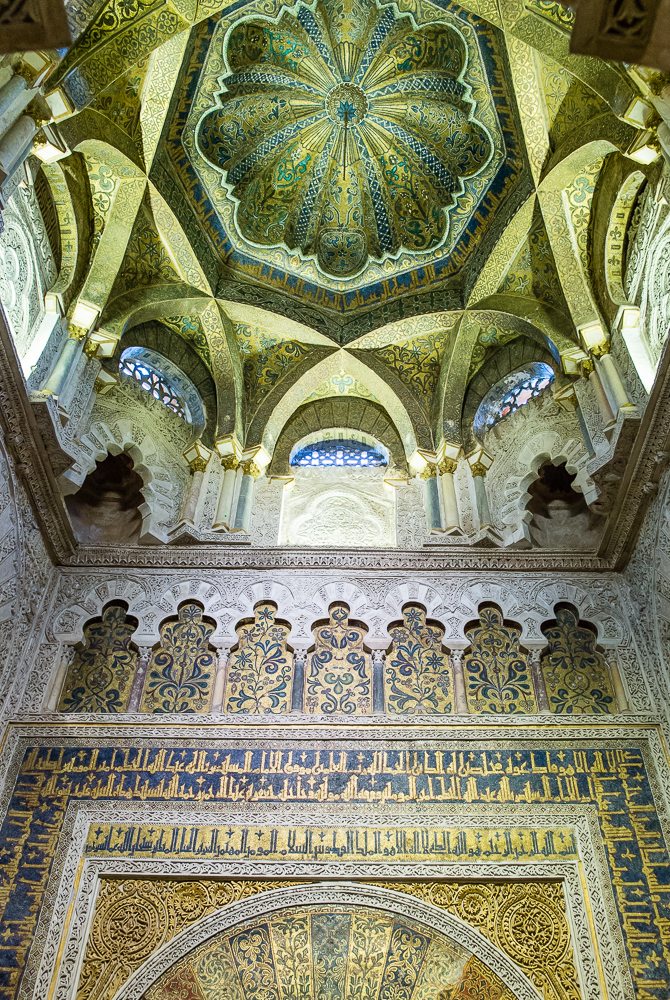
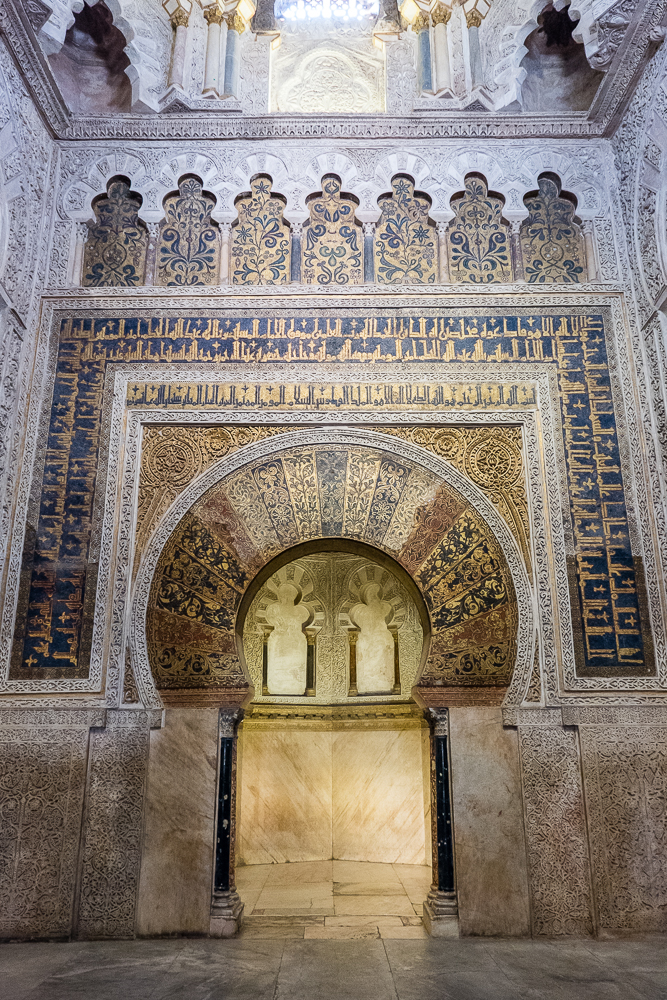
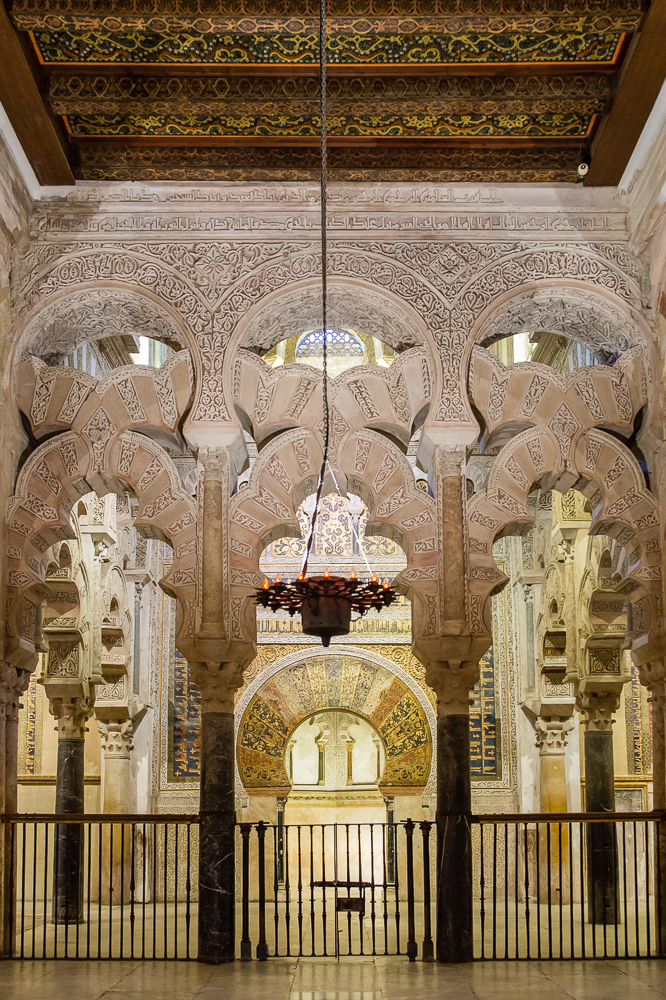
Mass is still held regularly in La Mezquita – in fact a choir service was in process when Stephanie and I walked in shortly after the 10:00 AM opening. We held prepaid timed tickets, 11€ each. About 100 to 150 people were in line before us, but the line moves quickly as prepaid tickets are mandatory. (Several kiosks onsite sell tickets. There is no ticket window.) I was needlessly worried that the mosque would be crowded by the time we made it inside. But a hundred or so tourists in a building of this size are negligible.
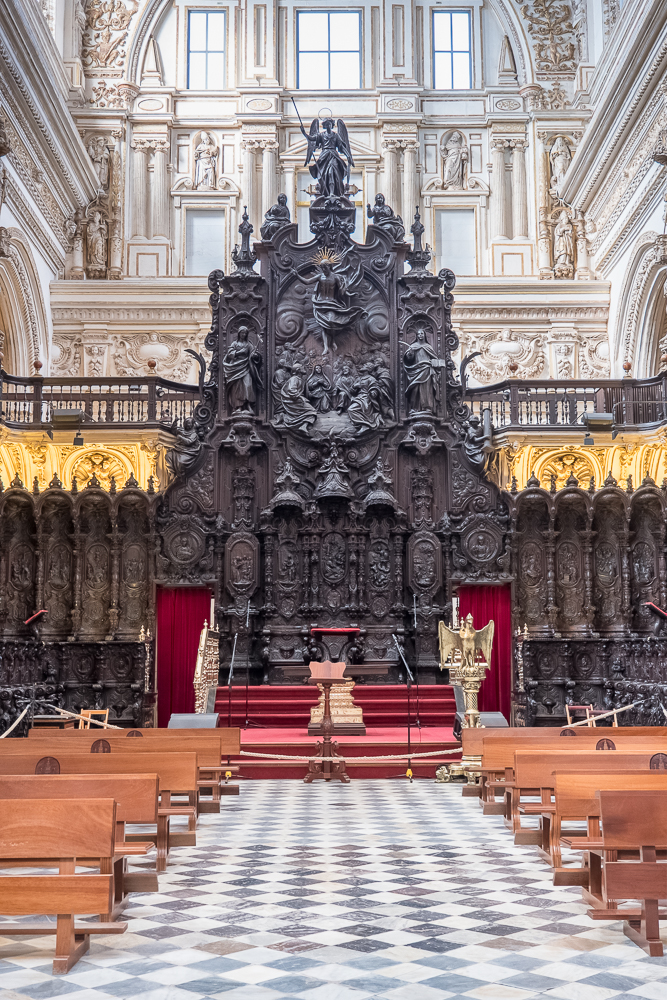
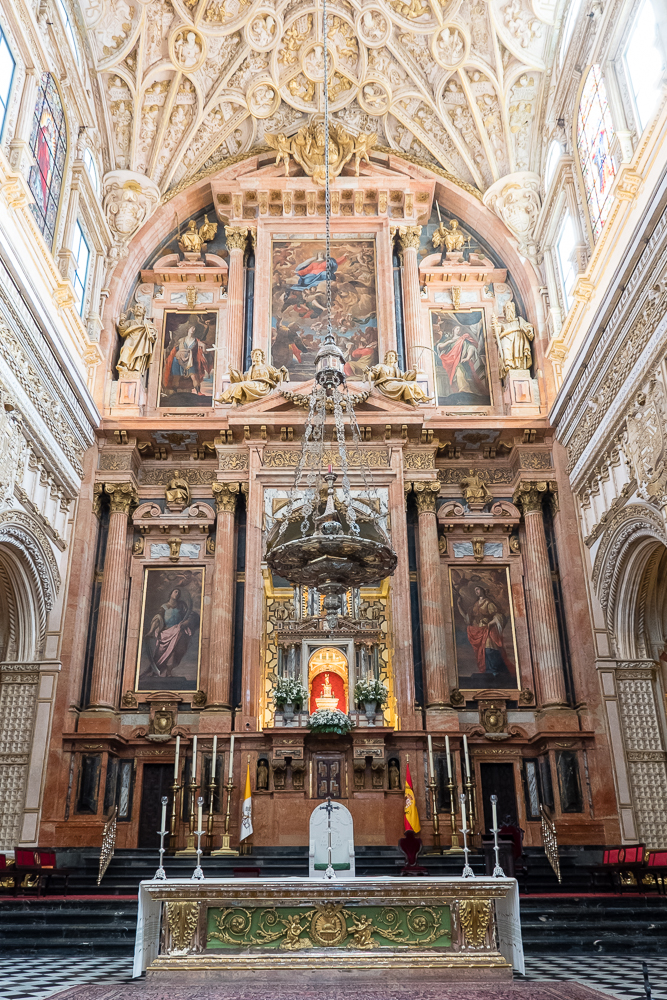
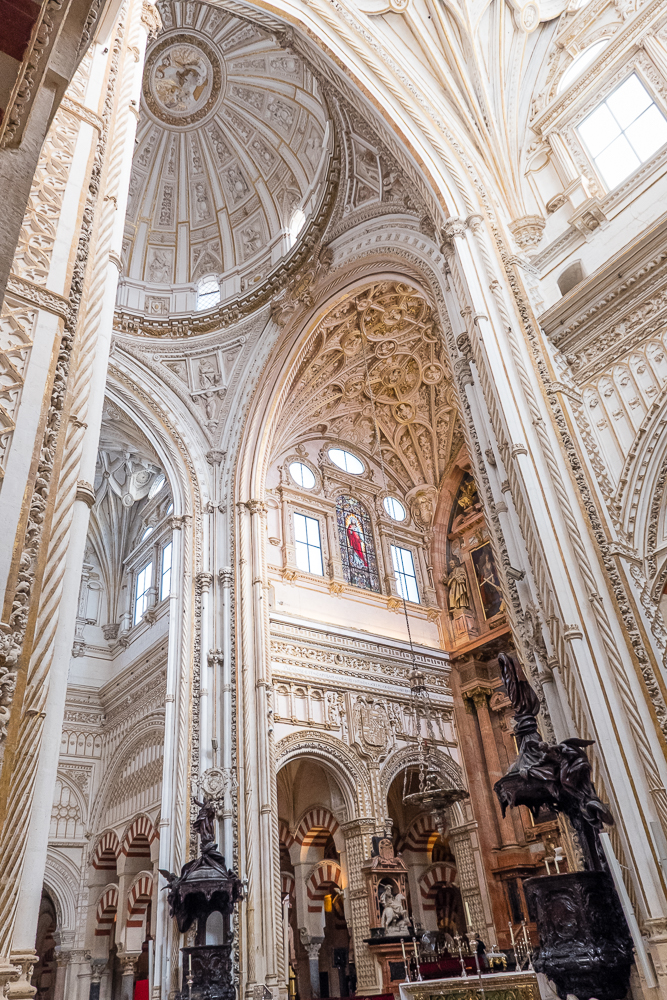
The sound of the service drew most of the tourists towards the cathedral. We made straight for the opposite section of the mosque and managed to avoid most people. The choir service ended about five to ten minutes after we arrived, which was our cue to circle back to the cathedral. An influx of tour groups arrived while we were in the cathedral area. Unfortunately the tours started in the areas of the mosque we had not yet visited. People were now congregating at popular places. It became more difficult to get good photos and videos as we were continually dodging tour groups and selfie-takers. A recording (in Spanish and English) played about every 15 minutes instructing people to keep the noise down out of respect. It somewhat worked.

Upon leaving the prayer hall you walk into La Mezquita’s Patio de los Naranjos (courtyard of the orange trees). Numerous orange trees are planted at regular intervals. A small pool with a fountain is near the bell tower. Otherwise the patio is concrete. Not much to see there. Unfortunately the bell tower is closed, though this saved us a few hundred steps and several euros.
After our visit to La Mezquita we returned to our Airbnb for an afternoon of relaxation. We rarely plan activities for the afternoon, instead preferring to relax, work on photographs, read, and watch television before venturing back out in the evening. Dinner and drinks were at Cafeteria La Calahorra, a touristy but still reasonably priced restaurant on our side of the river. Decent beer (Estrella Galicia), tapas (albondigas en salsa), and a sandwich (serranito – large enough to split) were on order.
As with every other restaurant (okay, bar) we have visited on our trip to this point, we sat outside and enjoyed a nice evening. Restaurants in Spain tend to be small, with more tables outside on the sidewalk than inside.
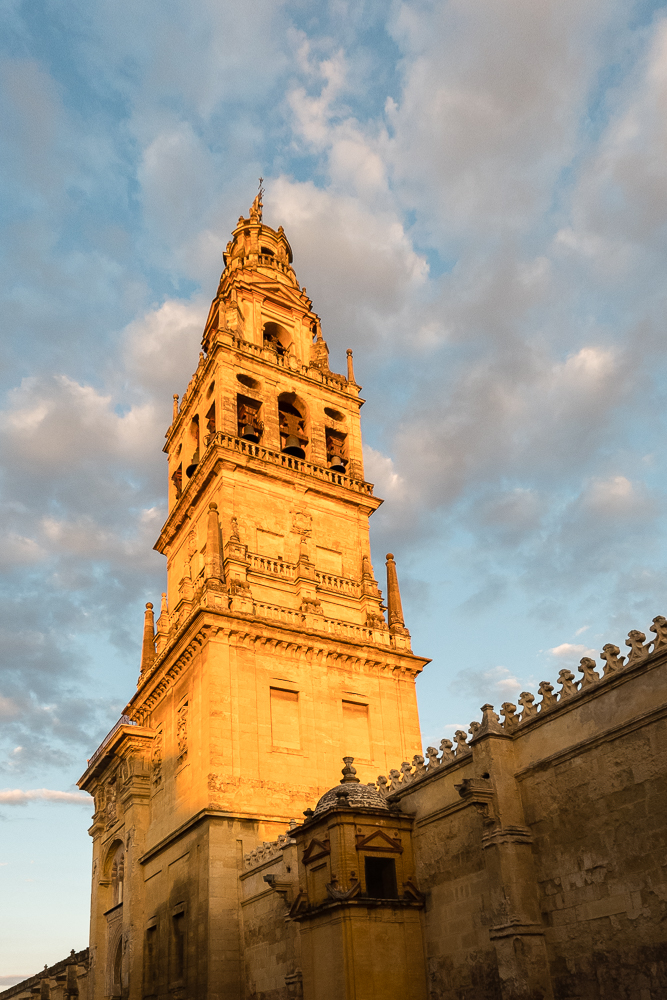
While preparing for our trip, we learned that La Mezquita is open to all for free from 8:30 AM to 9:30 AM, Monday through Saturday. Unsure of whether the free tourist hour would still be in effect during our stay in Córdoba, Stephanie and I decided not to risk missing out and bought timed entry tickets. Two days after our visit I returned to check out the free tourist hour.
On the plus side, the visit was free. Individuals only are allowed – no tour groups. Even with free entry, there were many fewer visitors. The recording warning against excessive noise was not played.
On the negative side, the cathedral section was roped off and closed as preparations were being made for the daily morning choir service. It was possible to look into portions the cathedral, but you could not actually walk into or through it. Several rooms with items on display were closed. You also had to watch out for the cleaning folks, though avoiding floor cleaning machines is easier than navigating around tour groups. All in all, I’m glad we paid for a timed entry.
In 1994 the entire old town of Córdoba was designated a UNESCO World Heritage Site, including La Mezquita-Catedral (previously so designated in 1984), Alcázar de los Cristianos, the Sinagoga, and Puente Romano. It is easy to see why. The monuments are well maintained and worth visiting. The old town is a fantastic area to get lost in while walking (which is not hard given the number of small, narrow, and twisting streets).
Garrett and Stephanie
Continue reading about our time in Córdoba:
Cordoba, Spain (September, 2021, Part II). The Real Alcázar de los Reyes Cristianos and Sinagoga de Córdoba are visited.
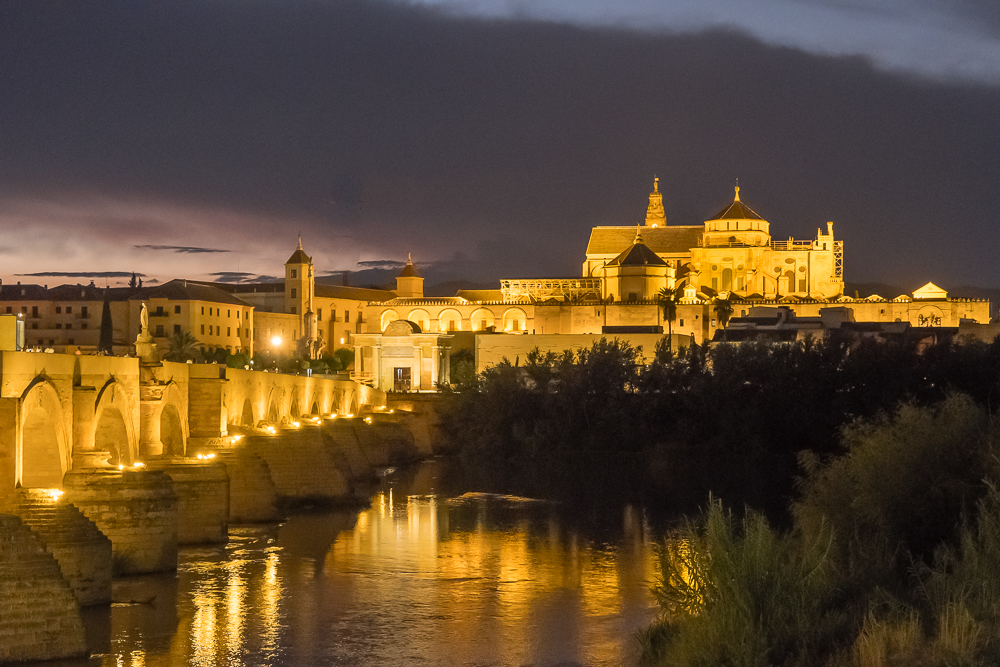
The Travel Blog page contains collected links to all of our travel posts. Check it out if you have not already done so.
Want to subscribe (or unsubscribe) for email notification of new blog posts? It is only two to three emails a month. Send your name and email address to slowtravelchronicles@gmail.com, and note subscribe (or unsubscribe) in the subject line. All email addresses will be kept confidential and not sold to any third-party. You won’t get any marketing junk or sales pitches from us.

Beautiful pictures!
Always enjoy these tours!!
Always enjoy seeing the photos and hearing your comments! Thanks…